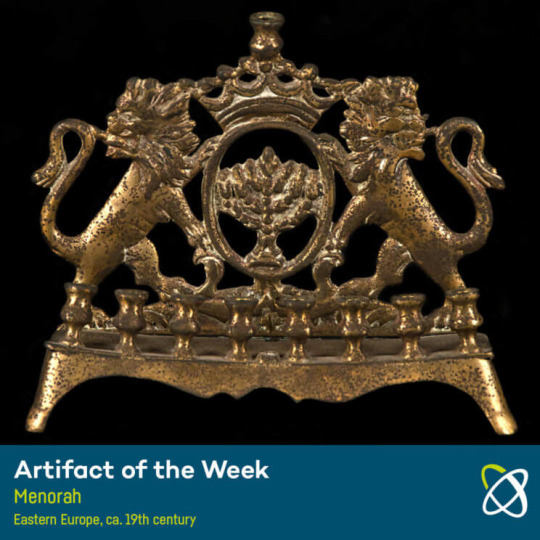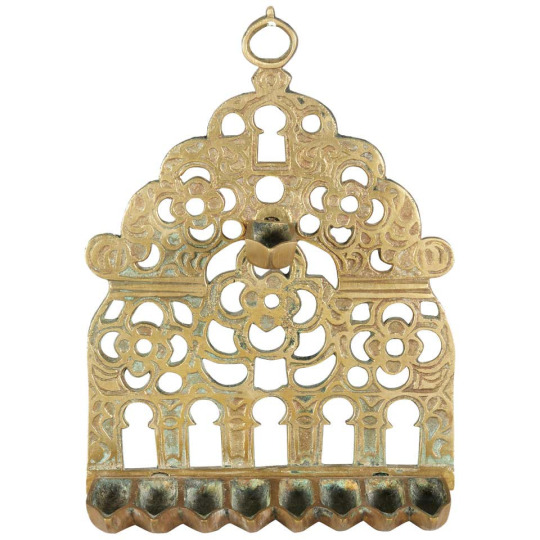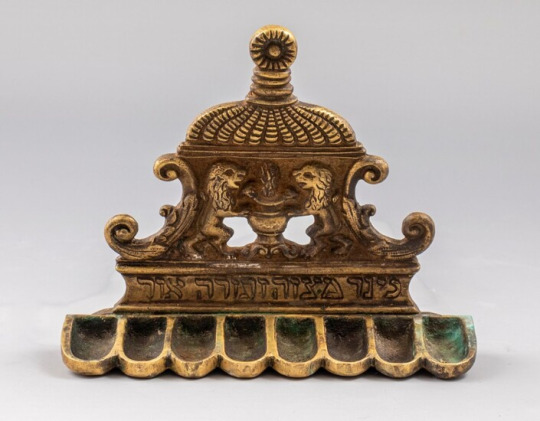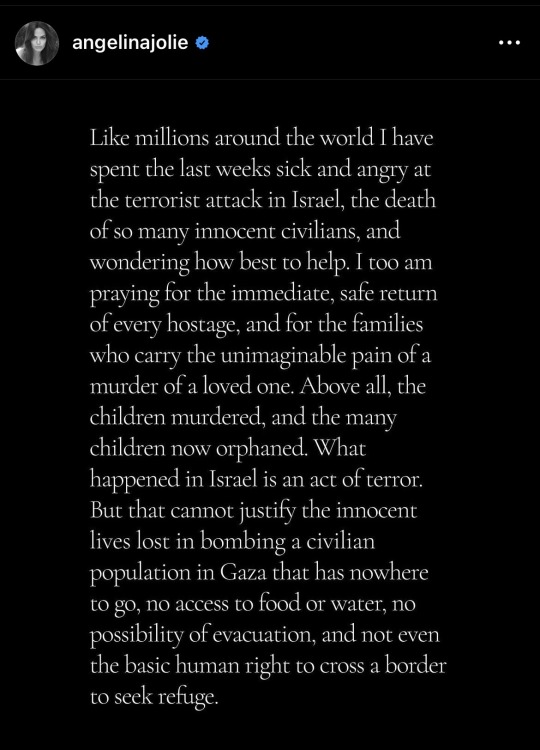#Jewish diversity
Text
#I’m curious#please share#counted for the fourth year running#omerpilled and sefiratmaxxing#jumblr#frumblr#judaism#Jewish poll#omer#counting the omer#sefirat ha omer#mitzvah marathon#Jewish diversity#jewish tradition#One more sleep til Shvues
74 notes
·
View notes
Note
(apologies in advance if this is a weird or offensive question, I'm just curious about the history)
Is judaica the same across Jewish communities of all global regions? Like do Asian, African, and European Jewish people have different types and styles of judaica, or is it generally all the same? I figured being dispersed across such varied areas would cause some divergences in how different cultural artifacts would look, but my cursory google searches have been unhelpful, both in finding judaica itself and in even getting any information on non-European Jewish communities.
I know this is probably a really ignorant question, but I like learning about different cultures and the history and evolutions of their artifacts.
There absolutely are different styles of Judaica!
Jews have been dispersed around the world, and thus our art has taken on many forms.
I will say though that a lot of Jews don't identify with just "Asian", "African", or "European". We are Jews. Our identity is Jewish. We have different labels that reflect where our ancestors found themselves in the diaspora at different points in history, but the three labels "Asian", "African", or "European" are far too simplistic. Ashkenazi, Italki, and Sephardi Jews have ties to Europe; Sephardi and Mizrachi and Ethiopian Jews have ties to Africa; Sephardi, Mizrachi, Bukharan, Cochin, and Kaifeng Jews have ties to Asia; all while being widely different and diverse subgroups and traditions. (There are far more different Minhagim than the ones I mentioned, by the way, I just mentioned a few as examples.)
Anyway, as for our Judaica.....
Of course it varies! We have had thousands of years to develop different art styles and techniques, although you will find certain motifs that arise often throughout most Judaica styles, such as Stars of David, lions, crowns, pomegranates and all of the rest of the Seven Species of Israel, eyes, hands, and fish.
Since it's almost Chanukah, I'm going to use different Chanukiyot as examples of the variations. I'm by no means an art historian, these are my notes based on what I've learned and read, and from observations.

Here is a classic Eastern European Chanukiyah. Here you can see two lions holding up a depiction of the seven-branched Temple Menorah, with a crown atop. It's made of bronze. This style of Chanukiyah was very popular, and had many variations. Sometimes the Temple Menorah was replaced with other motifs, such as the Ten Commandments, a Star of David, or some other symbol.

Here is a Moroccan Chanukiyah. You can see here that it's meant to be hanged on a platform or wall. It looks like it's made of copper. Already you can see the difference between this one and the previous one. You can see it has the floral and keyhole repeating patterns that are familiar in Moroccan art, and in fact this Chanukiyah here is intended to be lit with oil wicks, not candles, like the previous one.

This Chanukiyah isn't an antique, it's a modern design, as you can see by its oblong shape and reversable nature (it's supposed to be flipped over to serve as Shabbat candlesticks, too) however, it exemplifies the beautiful Yemenite Jewish silverwork. Silversmithing was historically a Jewish profession in Yemen, as Muslims were forbidden from silversmithing. Yemenite Jews acquired a reputation for their incredible silverwork. You can see how intricate the details are, the swirling, repeating patterns and leaves.

Here is an Italian Chanukiyah, likely from the 18th century. You can see the twin lions here again, only this time they're holding a flame. This Chanukiyah is also made for oil wicks, not candles. (Oil wicks are the more traditional and older way to light the Chanukah lights.) On it is enscribed in Hebrew, "Like the flame of Mitzvah and the Torah of light". There's also different designs than on the Eastern European Chanukiyah, such as the leaves and filigree, and the domed "roof".

And finally, here is an elaborate silver Ukranian Chanukiyah from the 19th century. This was once in the Great Suburban Synagogue in Lviv, and survived Nazi occupation. This is obviously a far more elaborate design than an average household would have, as this was in display in a syngogue and was intended to be a prominent peace of art. You can see again, more lions holding up the base of the lamp, and flowers and leaves and filigree, and a bird perched on top. The original Temple Menorah was described as having bulbs and flowers, and thus many Chanukiyah designs embody this by including such motifs in their designs.
These were only a few examples I was able to hobble together, and honestly you're right, anon, there aren't many accessible resources outlining the history and variation of Judaica.
Here's some further reading about Jewish art if you're interested:
Jewish Art: A Brief History
Jewish Art in the Ancient World
Ancient and Modern Art
Goldsmiths and Silversmiths
Jewish Art in Medieval and Modern Times
And this isn't educational, but it's a really interesting article:
Jewelry and Jewish Feminism
[id in alt text]
572 notes
·
View notes
Note
ayo, i currently just remebered a story concept i had that has a lot of jews in it and i was wondering if you knew any good recorces about diffrent practices between diffrent groups of jews all over the world?
im familar with basicaly only ashkenazi practices so i think that could be useful.
you'd probably get the most information by searching for specific practices, as opposed to searching broadly. like searching specifically for "moroccan jews" "ethiopian jews" etc. depending on who you want to write.
that being said, you might find some helpful information on JPR's website, as well as the Jews Around the Globe Archives from myjewishlearning.
I know that you probably already know this, but I'm going to put this here in case others find it useful/don't know what you mean by ashkenazi:
generally, the large categories of jewish experience will be grouped geographically into ashkenazi (european), sephardic (originally meant just spain and portugal, now also includes africa and the middle east), and mizrachi (mena - middle east, north africa). please note that these categories don't encompass everyone: ethiopian jews tend to be their own category, among others. but broadly speaking, these are the big groups.
good luck in your search!
#i hope those links help you somewhat!#and I'm sorry for taking so long to answer this#as always if anyone has more information or knows some good sources feels free to jump in#asks#answers#jewish diaspora#jewish diversity#writing#jewish tradition#rose-icosahedron
13 notes
·
View notes
Text
words mean things
i got into an argument with someone today because they said not all jews are ethnically jewish, and i said -- yes we are, and they said well converts aren't ethnically jewish. and i said... all jews are ethnically jewish, but we're not all the same race. this person was like well i think of race as a social construct and ethnicity as something you can't change, and like. the definition of ethnicity:
the quality or fact of belonging to a population group or subgroup made up of people who share a common cultural background or descent.
the definition of race:
any one of the groups that humans are often divided into based on physical traits regarded as common among people of shared ancestry
and these are dictionary definitions, not my personal ones. so yeah, man, all jews including converts? ethnically jewish. my rabbi makes a point of this, actually, when discussing conversion -- converts are the same as non converts according to jewish law. you convert into the religion and ethnicity. ethnicity is not about DNA.
i dunno, it bugged me.
#judaism#jews#converts are ethnically jewish#all jews are ethnically jewish#it's an ethno-religion#stop trying to make converts 'less' jewish thanks#jews are RACIALLY diverse#just because YOU'VE decided a word means something#does NOT mean it does
221 notes
·
View notes
Photo


Jewish Wedding Ring. First half 14th century
German
#germany#culture#medieval#wedding rings#heritage#ashkenazi#jewish#jewish culture#the met#gold#german history#peoples#diversity#old world#14th century
2K notes
·
View notes
Text
Flaming hot take, but not every movie or TV show needs to hit every individual diversity mark to be a good movie or show?
Like, please understand, I very much get the concept of intersectionality, and I know the actual statistics of minorities’ presence in the world and there is a whole lot of overlap that would be nice to see realistically portrayed in the media but it’s just like. Sometimes a story is just…A story. It’s one person’s story. And it doesn’t need to hit some specific diversity quota to be a good story.
Accept the movies about Latin people as a movie about Latin people. Accept the queer representation as queer representation. Take the story about the disabled person for what it is. But if it’s a story about a queer couple facing adversity, maybe don’t get up in arms about them not being the “right type” of queer for you. Wild idea? TELL THAT STORY YOURSELF.
Because sometimes that straight couple is dealing with other issues in their universe, and that’s why it’s not gay. Sometimes if you cast a black woman, that makes it a black story. And that Asian storyteller isn’t telling the story of a black woman. They’re telling their story.
So instead of getting mad that this isn’t the story YOU wanted to hear? Tell the story you wanted to hear. Because that one is theirs. And someone deserves to tell yours.
The diversity quota does as much of a disservice to storytelling as a lack of representation does. If you don’t resonate enough, make something we can resonate with more. Let us claim our stories as our own, and leave others to say what they want to say.
If we all tell our stories, I promise. Eventually you’ll find one just for you.
#Truly a sizzling hot take#I’m sorry#It’s just starting to piss me off#Like guys#I’m not the person to tell this black story#I can tell a neurodivergent story or a Jewish one#But I’m not qualified to tell a black story#Let someone else#Storytelling#Movies#TV#Television#Diversity#Representation#Individuality#Rant#Personal#Mine
277 notes
·
View notes
Text
Some days, coming home, getting on Tumblr and looking at my activity log, seeing people liking and reblogging, commenting in replies and tags on posts I've shared from different fandoms or dealing with different subjects, it's like...
It's like I prepared a buffet before I left my house for work that morning, I opened a gigantic table in the living room and I put there every dish and drink I could think of, just a huge assortment for whatever people's taste in food might be, I sent out invitations to all of my friends and left the door open for them. Then I came back home to find them all eating and drinking in my living room, enjoying the different dishes, chatting away happily... and most days, being disabled, I don't have the energy to join the buffet. I go and lie down to rest in my bed. But I can hear the chatter from the living room. And it makes me happy. It just makes me so, so happy.
Thank you for coming to my buffet, friends.
#fandom#fandom culture#fandom meta#fandom things#fandom love#buddie#mileapo#captain swan#black sails#judaism#feminism#jewish history#gay pride#cute animals#just some of the stuff i post about#at least semi-regularly#and it makes me so happy that the dishes are so diverse and there's always someone that likes at least one#kinnporsche#our flag means death#the blacklist
151 notes
·
View notes
Text
i don’t want to be overly essentialist or talk outside my cultural lane but... there is something so intensely not anglo-’murican about the way the way andor treats death and it’s so fascinating and refreshing. like on one level this is a show profoundly about death from the very structure of its narrative, but it’s about how you live knowing you will die rather than the glorious death-from-martyrdom-death-as-redemption narrative, and therefor, inversely, about the profound interconnections between the dead and the living and those on the liminal in-between. now we have maarva’s death, and the very introduction of her death comes through the assembled chorus of communal voices who have come to clean her house and take her to rest. (i also love the fact that maarva died, explicitly, of old age and so many of the other related issues. i don’t think you can make the case that the empire *wasn’t* involved because she’s someone so utterly and clearly destroyed by its actions, but i do like that this was a so-called “ordinary” death, because of the thematic purpose that even “ordinary” deaths are heartbreaking and awful and worth remembering.)
andor makes it canon that there are communal aid organizations- i immediately think chevra kadishas! though many cultures have their own organisations and social structures for how to support the grieving and honour the dead- which is just one of the ways it highlights community and the complexity of interpersonal relationships. the daughters of ferrix are introduced an episode earlier, and i realised on a rewatch with my family that the daughter of ferrix - keezy maybe?- introduced at the beginning of the episode is also mentioned by bee in the first episode as being someone who helps maarva with her dinner and medication. we don’t see maarva’s body go alone, we see her transported through the streets by the women of ferrix. andor makes the case of elder care as communal connection and antifascist work, AND that it is done by the same people as those that bury the dead. and the way that andor is building up t having the season finale be the funeral, the thing that drags cassian home and into the line of fire being his mother’s funeral, the storytelling possible about funerary customs and memorialisation as acts of cultural resistance and aggressive rehumanisation... i’m too verklempt to say much more but i think the way this thematic arc is so intertwined with cassian’s time in narkina 5 and the scene with him and melshi at the end of the episode like! no one is lovingly honouring every one of those men with two-day funeral ceremonies through the streets. NO ONE remembers but cassian and melshi. two episodes earlier ulaf died, but the closest thing he had to the daughters of ferrix was the doctor, the fellow prisoner, who refused to learn his name and quietly euthanised him in the hallway. until we know more there were nearly five thousand other deaths. and the episode ends with melshi saying, it’s our duty as survivors to carry the weight of memory so that other people will know and remember this. they are also carrying the weight of mourning those whose time it was not to die. fuck. this show guys. it has me
#andor#andor spoilers#andor meta#my experience of funerary stuff is very much in the pinoy/irish/jewish nexus so i'd love to hear other thoughts#but damn this hit deep cored me the Ethnic ness of it all really#maarva andor#melshi's speech as very similar to many jewish rememberences of the shoah too like fuck. we REMEMBER#we force you to remember we are always remembering we are always surviving#cassian andor#ruescott melshi#not being latine i don't want to say something *broad* about entire diverse cultures' conceptions of death but i WAs reading#octavio paz's essay on day of the dead and death and yeah.yeah. many many manyyyy thoughts
1K notes
·
View notes
Text
If you're going to criticize jews but your entire criticism hinges on jews not only being all white but also being treated as white all the time, your criticisms are unbaked and your cornerstone of politics relies on antisemitism, considering how quickly and easily you fall for it
#jumblr#jewish politics#personal thoughts tag#antisemitism#antisemitism tw#as a white converting person/jew in progress: the antisemitism ive faced (even how MILD it is) has still shown me that i am being separated#i could not even imagine being a jew of color where your existance is treated as an impossibility or as something contradictory#many of the progressive types i have been around still fall for this frankly antisemitic idea#feel like this could be worded better so if anybody (especially jews of color) want this post: share if you please (/genuine)#at the very least it shows me that all you have done to expose yourself to jewishness is like...#...a movie where the jewish character is like. from brooklyn and is pale and Looks Jewish By Your Standards#i really don't like talking about antisemitism (who does.) but it's important to me#not just because i face it (mildly) as a jew-in-progress but because JEWS ARE PEOPLE AND LIKE ALL PEOPLE ARE DIVERSE#and i see this exact post (almost) from jews and this is a problem that's probably as old as time but that doesn't make it right#and like.. 'if youre going to criticize jews' like people are going to be normal and not antisemitic about it. im just bad at starting posts
97 notes
·
View notes
Text
Q: "Most of the Arab countries say that the 'Zionist project' is racist project"
A: "This is a mistake, brother, and here's why..."
#israel#secular-jew#jewish#judaism#israeli#jerusalem#diaspora#secular jew#secularjew#islam#Druze#Israeli Muslims#Israeli Christians#Muslim#Christian#Israeli diversity#Quran#Jewish state of Israel#Arab rejection#hamas is isis#Islamic jihad#Abraham#Jacob#Torah#Talmud#democracy
21 notes
·
View notes
Text





The Central Bureau of Statistics in Israel recently revealed that the most common name among newborn boys in Israel is Muhammad, topping the list with 2,353 occurrences.
This statistic is not just a number; it's a testament to the rich cultural mosaic that defines Israel. It stands as a profound proof against the ridiculous allegations about Israel being an ap@rtheid state. How can such claims hold when the most popular name in a nation reflects its diverse and inclusive society?
In Israel, names like Muhammad, Joseph, and David lead among boys—each from different cultural backgrounds, illustrating the harmonious coexistence within the country.
For girls, the name Avigail took the lead this year with 1,278 registrations, followed closely by Ayelet, Tamar, and Maya.
This diversity is mirrored across various communities within Israel, where Arab names like Miriam and Watheen Sham are equally celebrated among newborn girls.
This blend of Jewish, Muslim, and Christian names among the country’s most popular indicates an intertwined society where communities from different ethnicities and religions live together.
The popular names among Christians being Charbel, Elias, and George, and among Druze, Adam and Liam are telling of this blend.
The naming trends in Israel are a clear indicator of the country's evolving cultural fabric, standing in stark contrast to any accusations of segregation or discrimination.
As we look at these trends, it becomes evident that Israel's societal structure is far from the divisive ap@rtheid false narrative; instead, it is a vibrant testament to coexistence and multiculturalism.
#boynames #girlnames #israel #diversity #inclusion
20 notes
·
View notes
Text
11 Menachem Av 5784 (14-15 August 2024)
When the Babylonian army first besieged Jerusalem and took captives away to live in exile, the prophet Yirmeyahu sent them a message:
So says HaShem, ruler of the heavenly host, the G-d of Israel, to all the captives, who HaShem has caused to be carried away captive from Jerusalem to Babylon: Build houses, and dwell in them, and plant gardens, and eat their fruits; marry there, and bear children; and find wives for your sons, and husbands for your daughters, that they may bear sons and daughters; and multiply there, do not waste away. And seek the peace of the city where G-d has sent you as exiles, and pray to HaShem for it; for in the peace of the city shall ye have peace.
The exiles appear to have taken this message to heart. A generation later, when the Persians seized control of Babylon and permitted displaced peoples within the empire to return to their ancestral homelands, many Jews stayed in the Babylonian heartland, tending their gardens, raising their children and grandchildren, and praying for the peace of their cities. Five hundred years later, after another Mikdash had been built and destroyed, the Jews of Babylon were still there, living under yet another Persian empire. They too established rabbinical academies like the one Yochanan ben Zakkai founded at Yavneh. And when the Gemara was compiled it was collected semi independently by both the Galilean and Babylonian sages, with the Talmud Bavli being the more complete and detailed of the two collections. Through centuries of turmoil, and then millennia, the Jewish community of the Mesopotamian river valley remained strong and vibrant. And through it all, the Jews often saw their own welfare as wrapped up in that of their gentile neighbors and sought the peace of their cities.
One such occasion came on the 11th of Av 5493. The Sassanian empire of Tannaitic times had given way to the Islamic caliphates, and the caliphate in its own turn had been absorbed by the Ottoman Empire. The Jews of Sura were now the Jews of Baghdad, and Baghdad was under siege by a Persian army led by Nader Shah Afshar. The Safavid Persians were a theocratic regime which had imposed restrictions on Jewish life similar to those of medieval Western Europe— Jews were forced to live in segregated neighborhoods, wear badges marking them as different, and forbidden from entering most trades and professions. The Jews of the Ottoman Empire by contrast had a large amount of official toleration. And of course the capture of Baghdad by the Shiite Safavids would also bring hardships on the majority Sunni Muslim population of the city.
On the 11th of Av 5493, an Ottoman army led by the 70 year old general and recently retired Grand Vizier Topal Osman broke the Safavid siege and drove off the Persian invasion. Baghdad’s Jewish community rejoiced in the deliverance of the city, and observed 11 Menachem Av as a special commemoration of the deliverance of Baghdad for generations. It has only been since the Second World War and the rise of Arab and Islamic nationalism that the Jews of Babylon once more faced a major persecution. Most of Baghdad’s Jewish population made aliyah under pressure from antisemitic groups which accused them of double loyalties with the newly established Israeli state.
#hebrew calendar#jewish calendar#judaism#jewish#jumblr#Tanakh#Sefer Yirmeyahu#babylonian exile#Babylonian Jews#2500 years in Babylon#diaspora judaism#Jewish diversity#Mesopotamian Jews#Jewish history#deliverance#Menachem Av#11 Menachem Av#🌔
25 notes
·
View notes
Text
Just like how some celebrities on the popular blockout lists HAVE spoken up for Palestinians, some celebrities I’ve seen people complain about because they believe they haven’t said anything condemning October 7 HAVE spoken up for Israelis. One of those people is Angelina Jolie.
Her statement about I/P on Instagram had a large part dedicated to condemning the Hamas attacks, right on the first page. It is the kind of statement I wish more celebrities would put out there which emphasizes empathy for both peoples, and yet the hate she continues to get is unreal. Just because she’s against the Israeli government’s actions does not mean she’s against Israelis. Please continue to fact check as well as check your own biases. We are all susceptible to falling for misinformation

#Jew#Jewish#Jews#Judaism#israel#Israeli#palestine#Palestinian#Gaza#bring them home now#free palestine#feminist#feminism#social justice#justice#intersectionality#include Jews in your activism#angelina jolie#antisemitism#diversity#racism#be like Angelina#thank you#bias#biases#jumblr#Middle East#political#politics#media literacy
23 notes
·
View notes
Note
Hello S. Did you mean to reblog bark mitzvah to your multigender blog /silly
No I did not! Wrong blog incident 69 dead 420 injured
20 notes
·
View notes
Text


hes actually awesome btw.
12 notes
·
View notes
Text
gonna draw carpathian/rusyn miku soon because i havent seen anyone do that yet :>
#not art#i love seeing all of the ukrainian mikus but id love to see more that reflect ukraine’s diversity#i did see a cossack miku which is cool af#maybe ill do odessan-jewish miku next#what if i drew a bunch of ukrainian mikus together and they were all friends
15 notes
·
View notes